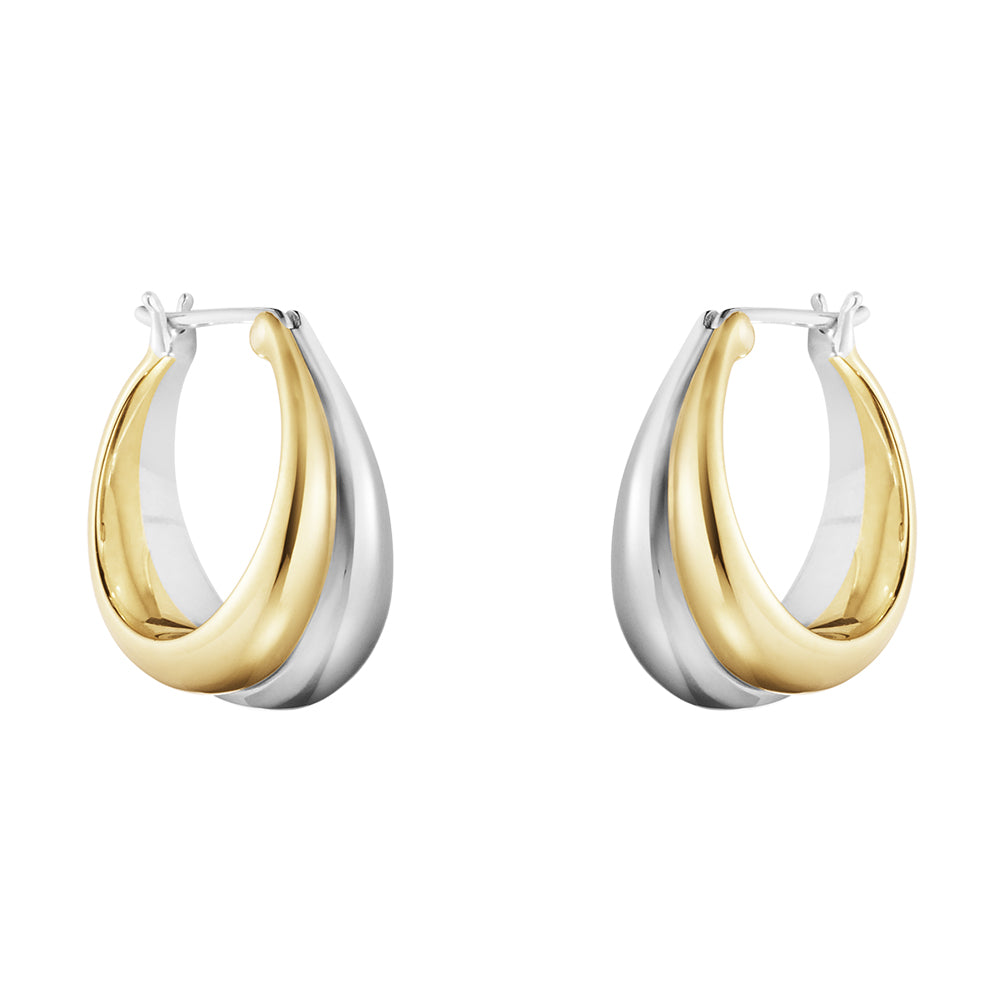
How to Take Out Earrings:A Professional Guide
Introduction
Earrings, those delicate ornaments that grace our earlobes, are more than mere accessories; they are expressions of style, personality, and sometimes even status. Yet, for all their beauty, they come with a practical challenge that every wearer must face: how to take them out properly. This seemingly simple task is laden with nuances that can mean the difference between a well-preserved piece of jewelry and one that's damaged, lost, or worse, causes injury. In this expansive guide, we'll journey through the intricacies of earring removal, offering not just step-by-step instructions but delving into the underlying principles, backed by insights from jewelry experts, and exploring innovative techniques that transform this routine activity into an art form.
The Significance of Proper Earring Removal
At first glance, removing an earring might seem like a trivial matter. However, the reality is far from it. The manner in which you remove your earrings can have profound implications for both the jewelry and your well-being. Let's explore why this practice deserves your full attention.
Preserving Jewelry Integrity
Earrings, despite their often delicate appearance, are precision-crafted items. Each component, from the slender post of a stud to the intricate mechanism of a latch back, is designed to function in harmony. When you remove an earring incorrectly, you risk disrupting this balance. A yank on a hoop earring might bend its latch, rendering it insecure for future wear. A hurried removal of a stud earring could scratch the backing or, worse, bend the post. According to the Jewelers of America, a organization that has championed jewelry industry standards for over a century, "The lifespan of your jewelry is directly tied to the care you take in its daily handling."
Consider this: a high-quality pair of diamond stud earrings can cost hundreds, even thousands of dollars. The metal components, often gold or platinum, are valuable in their own right. But beyond the monetary value, there's an emotional investment. Perhaps those earrings were a gift from a loved one, or they've accompanied you through significant life events. Each scratch, each bend, diminishes not just their resale value but also their sentimental worth.
Ensuring Comfort and Safety
Beyond the material aspects, there's a human element to consider. Earlobes, composed of soft tissue and cartilage, can be surprisingly sensitive. Improper earring removal can lead to discomfort, redness, and in extreme cases, tearing of the earlobe. For those with sensitive skin, the metals in earrings can cause allergic reactions, which improper handling can exacerbate.
Imagine the scenario: you're in a hurry, grabbing at your hoop earring to remove it quickly. The edge of the latch digs into your earlobe, causing a sharp pain. Not only is this unpleasant, but it can create a small wound, susceptible to infection. The American Academy of Dermatology notes that pierced earlobes are vulnerable to bacterial infections when not cared for properly. By learning gentle, effective removal techniques, you create a barrier against such issues.

The Art and Science of Earring Design
To truly master earring removal, one must appreciate the design principles that underpin these accessories. Earrings are not random constructions; they are the result of centuries of jewelry-making evolution, combining aesthetics with functionality.
Types of Earrings and Their Removal Considerations
-
Stud Earrings: These classics feature a post that pierces the earlobe, secured by a backing. The removal method here focuses on the relationship between post and backing. A gentle twist can often loosen a friction back, while butterfly backs might require a slight pinch to release their hold. The Gemological Institute of America (GIA), the world's foremost authority on gemstones and jewelry, explains that the tension in a stud earring's backing is calibrated to provide a secure fit without causing excessive pressure on the earlobe. Understanding this balance helps in devising removal techniques that don't compromise it.
-
Hoop Earrings: Ranging from simple thin hoops to elaborate hinged designs, these require a different approach. Hinged hoops typically have a latch that clicks into place. The removal process involves identifying the latch mechanism and operating it with precision. Non-hinged hoops might need to be gently widened, but this must be done carefully to avoid metal fatigue. Metal, when bent repeatedly, can weaken. The Jewelers of America warns that "repeated forceful bending of a hoop earring can lead to metal stress, increasing the risk of the hoop breaking at the bend point."
-
Dangle and Chandelier Earrings: These statement pieces often have multiple connection points. The removal process here is like disassembling a small puzzle. You must start from the bottom, carefully detaching each component. But why is this necessary? Because these earrings have moving parts. The wires or chains that hold the gemstones or decorative elements can tangle or bend if not handled properly. Think of it as a cascade effect: one misstep in removal can lead to a domino of issues affecting the earring's structure and appearance.
Materials Matter
The material of your earring isn't just about its visual appeal or value; it influences how you should remove it. Gold, whether yellow, white, or rose, is a relatively soft metal. It can scratch easily. When removing gold earrings, a cloth barrier between your fingers and the metal can prevent accidental scratches. Platinum, on the other hand, is more durable but also heavier. This added weight means that when removing platinum earrings, you need to provide extra support to prevent strain on the earlobe. Silver earrings are prone to tarnishing. The GIA suggests that when removing silver earrings, avoiding contact with substances that can accelerate tarnish, like certain cosmetics, is wise.

Innovative and Professional Earring Removal Techniques
Now that we've laid the groundwork, let's delve into the heart of this guide: the techniques. These methods are not mere hacks; they are approaches developed with an understanding of jewelry mechanics and human anatomy.
The Grip-and-Twist Method: A Dance of Precision
This technique, ideal for stud earrings, is a delicate balancing act. Begin by preparing your environment. Ensure your hands are clean. Dirt or oil can transfer to the earring, leading to premature wear of the backing or post. Next, grasp the backing between your thumb and index finger. The key here is the grip—it should be firm enough to provide control but gentle enough to avoid crushing the backing, which is often made of a softer metal or plastic.
As you twist, imagine you're communicating with the earring. The twist isn't a violent motion but a persuasive one. You're coaxing the friction mechanism to release its hold. The GIA's research into jewelry wear patterns shows that a twist of approximately 45 degrees is usually sufficient to loosen most friction backs. Once loosened, pull the earring straight out. This straight trajectory is crucial. Any sideways motion can inadvertently bend the post, altering the way it sits in your earlobe and potentially causing discomfort in future wearings.
The Loop-and-Lift Approach: Elegance in Hoop Earring Removal
For hoop earrings, this method transforms a potential struggle into an elegant procedure. Start by creating a loop with a soft cloth. The cloth serves multiple purposes: it enhances your grip on what can be a slippery metal surface, and it acts as a cushion, preventing the metal from digging into your fingers—a common issue when removing heavier hoop earrings.
Hook the loop under the latch mechanism. This step requires patience. The latch is often small and can be easily missed. Take a moment to align the loop correctly. Once hooked, lift upward. The lifting motion should be smooth and continuous. Think of it as guiding the earring off your ear rather than forcing it. The Jewelers of America highlights that this method is particularly effective for preserving the finish of delicate metals. Gold, with its softness, can easily scratch. The cloth loop minimizes direct contact between your fingers and the gold, reducing the risk of those tiny, accumulating scratches that can dull the earring's shine over time.

Navigating Common Earring Removal Challenges
Even with the best techniques, challenges can arise. Let's address them head-on, turning potential frustrations into manageable situations.
Sensitive Ears:Finding Comfort in the Midst of Sensitivity
Sensitive ears are a reality for many. The very act of wearing earrings can be a delicate balance between expression and discomfort. When it comes to removal, the stakes are higher. For those with sensitive earlobes, the process can feel like a minor ordeal. Here's how to navigate it:
-
Numbing agents: Topical creams designed to temporarily reduce skin sensation can be a lifesaver. Apply a small amount around the earring area before removal. Give it a few minutes to work. The result is a significant reduction in discomfort during the removal process.
-
Hypoallergenic materials: Not all earrings are created equal when it comes to skin sensitivity. Stainless steel is a fantastic option. It's corrosion-resistant and doesn't react with most skin types. Titanium is another excellent choice, known for its biocompatibility—it's even used in medical implants. Gold-filled jewelry offers the beauty of gold with a reduced risk of allergic reaction compared to some other gold-plated items. When browsing Relax Feel Fashion's earring collection, consider these material options for a more comfortable wearing and removal experience.
-
Taking it slow: Time is your ally. Rushing can lead to increased discomfort and even accidental injury. Take deep breaths, approach the removal process methodically. By slowing down, you give your earlobe a chance to adjust, potentially minimizing any stinging or burning sensations.
Preventing the Dreaded Lost Earring
Losing an earring is a heart-sinking moment. One moment you're adorned, the next, you're missing half of a pair. Prevention is a multi-layered strategy:
-
Earring guards: These small, often rubber or silicone accessories fit over the back of your earring. They add an extra layer of security. How do they work? They increase the surface area that holds the earring in place. So, even if the backing comes loose, the guard keeps the earring from slipping out completely. They're particularly useful for active individuals or those who frequently remove and replace their earrings.
-
The spare earring habit: Keep a spare earring in your jewelry box or purse. The Jewelers of America's practical advice here cannot be overstated. Life is unpredictable. Having a spare means you're not left with an incomplete look in case of loss. It also reduces the stress and urgency of searching for a replacement, allowing you to focus on your day.
-
Regular checks: Make it a habit to periodically examine your earrings. Look for loose parts—a backing that's wobbling, a latch that's not closing properly, or a post that's slightly bent. These are early warning signs. Addressing them before they lead to a lost earring is like preventative medicine for your jewelry.

Styling Wisdom and Product Recommendations
Your choice of earrings isn't just about what looks good in the moment. It's about how they fit into your life, your style narrative, and your practical needs. Let's explore how to make informed choices from Relax Feel Fashion's earring collection.
Everyday Earrings: Simplicity Meets Functionality
For daily wear, you need earrings that are comfortable, durable, and versatile. Simple stud earrings are the cornerstone of any jewelry collection. Look for those featuring geometric shapes—a tiny square or circle. These shapes are inherently stable, reducing the risk of the earring shifting and causing discomfort. Small gemstone studs add a touch of elegance without the fuss. The gemstone's size means it's less likely to catch on hair or clothing during removal.
Consider materials that stand up to daily wear and tear. Gold-filled earrings offer gold's beauty with added durability compared to some other gold-plated options. Sterling silver, when properly cared for, provides a lustrous look and is generally kind to sensitive ears. These everyday earrings become extensions of your style, always ready to complement a casual outfit or dress up a simple look.
Special Occasion Earrings: Making a Statement with Confidence
When the calendar marks a special event, your earrings should elevate your ensemble. Statement pieces with multiple gemstones or intricate metalwork are perfect. The way these earrings catch the light can transform your appearance. But how do you handle such valuable accessories?
When removing them after the event, take extra care. Use the techniques outlined earlier but with added gentleness. These earrings often have more complex structures. A slight misstep in removal can damage the gemstone settings or delicate metal connections. Store them immediately in a jewelry box with individual compartments. This prevents them from being jostled by other jewelry pieces, which can cause scratches or dents.
Comfort-Focused Earrings: When Sensitivity Demands Attention
If sensitive ears are a constant concern, your earring selection should prioritize comfort. Lightweight designs are your friends. Delicate wire earrings, for example, distribute weight differently than solid metal earrings. They're less likely to pull on your earlobe during removal.
Look for earrings with smooth surfaces. Textured or rough metal can irritate sensitive skin. The Relax Feel Fashion collection offers options with polished finishes that glide easily when being removed, minimizing contact irritation.

The Comprehensive Care of Your Earrings
Removing your earrings properly is just one chapter in the story of jewelry care. Maintenance is the ongoing narrative that preserves your earrings' beauty and function.
Cleaning Practices That Enhance Longevity
The GIA advocates for a gentle cleaning routine. Mix a few drops of mild dish soap with warm water. The soap breaks down oils and dirt that accumulate on your earrings. Use a soft toothbrush to gently scrub the earring's components. For intricate designs, a toothpick can navigate tight spaces, dislodging debris that a brush can't reach. Rinse thoroughly with lukewarm water and pat dry with a lint-free cloth.
Avoid harsh chemicals. Common household cleaners can strip the earring's finish or react with gemstones. The delicate balance of an earring's appearance can be easily disrupted by the wrong cleaning agents. This careful approach ensures that after each cleaning, your earrings emerge revitalized, not damaged.
Storage Solutions for Optimal Protection
How you store your earrings when they're not being worn is a critical factor in their longevity. A jewelry box with individual compartments is ideal. Each earring has its own space, preventing the jostling that can lead to scratches or bent components. For earrings with particularly delicate components, consider a jewelry pouch within the box. This adds an extra layer of cushioning.
If you're traveling, a jewelry roll can be invaluable. It allows you to keep earrings separate from other items in your luggage. The soft fabric of the roll protects against impacts and pressure that might otherwise damage your earrings. Think of storage as a sanctuary for your jewelry—a place where they rest safely until their next outing.

The Cultural and Historical Dimensions of Earrings
To add another layer of appreciation to your earring-wearing and removal practices, consider the cultural and historical significance of earrings. Throughout human history, earrings have served as symbols of status, religious affiliation, and cultural identity.
In ancient civilizations like Egypt and Mesopotamia, earrings were crafted from precious metals and adorned with gemstones. They indicated wealth and social standing. Removing such earrings would have been a deliberate act, perhaps performed by servants as a display of the owner's high status. In contrast, in some cultures, earrings have spiritual significance. They might be believed to protect the wearer from harm or to symbolize a connection to the divine. The act of removing them could be accompanied by rituals or prayers.
Understanding this historical context adds a dimension of respect to how we handle our earrings. Each time you remove an earring, you're participating in a practice that spans millennia. You're connecting with the countless individuals across cultures and time who have adorned themselves and carefully maintained their jewelry.
The Future of Earring Technology and Design
Looking forward, the world of earrings is evolving. Advances in technology are leading to innovations in earring design and materials. 3D printing allows for the creation of intricate earring designs that would be nearly impossible to craft by hand. This technology enables precise, complex structures that can enhance both the aesthetic appeal and functionality of earrings.
Smart jewelry is another emerging trend. Earrings equipped with sensors could potentially monitor health metrics or even enhance social interactions through subtle lighting or vibration features. As these technologies develop, the methods for removing and caring for earrings will also need to adapt. The Jewelers of America is at the forefront of exploring how traditional jewelry care principles can be applied to these new forms of adornment.
Conclusion and FAQ
Conclusion
The journey through the art of earring removal has revealed it to be a practice rich with considerations, techniques, and underlying principles. From understanding the engineering of earrings to navigating personal challenges like sensitive ears, and even touching on the cultural tapestry of jewelry, this guide has provided a comprehensive perspective.
By implementing the detailed techniques discussed, being mindful of material properties, and thoughtfully selecting earrings that align with your lifestyle, you enhance your relationship with your jewelry. Each careful removal is an act of preservation, respect, and self-care. As you explore Relax Feel Fashion's earring collection, armed with this knowledge, you're not just choosing accessories; you're investing in pieces that promise beauty and longevity when treated with the care they deserve.
FAQ
Q: How often should I clean my earrings if I wear them every day?
A: Daily wear means your earrings accumulate oils, sweat, and environmental pollutants. The GIA advises cleaning them at least once a week. This regular maintenance prevents buildup that can dull their appearance and potentially irritate your earlobes. For a quick daily cleaning, simply wiping the earrings with a soft, dry cloth can help remove surface dirt.
Q: Can I sleep with my earrings on, and does it affect how I remove them in the morning?
A: Sleeping with earrings on is a personal choice, but it does come with considerations. Lightweight stud earrings are generally more comfortable for sleeping. However, when it's time to remove them in the morning, you might find that the earlobe has swollen slightly during sleep, making removal a bit tighter. Apply a gentle warm compress to the earlobe for a few minutes before removal. The warmth can help reduce swelling, making the removal process smoother and more comfortable.
Q: I have a collection of vintage earrings. Are there special considerations for removing and caring for them?
A: Vintage earrings are treasures, often featuring older manufacturing techniques and materials. When removing them, be mindful of potential fragility. Old metal can become brittle, and gemstone settings might have loosened over time. Use extra gentle pressure during removal. Consider using a jeweler's magnifying glass to inspect them before and after wearing. This allows you to spot any issues like a loosening gemstone or a weak latch mechanism. Store vintage earrings separately from modern pieces to prevent damage from accidental collisions in your jewelry box.
Q: Are there any tools that can assist in earring removal, especially for those with limited dexterity?
A: Absolutely. For individuals with limited hand strength or dexterity, there are specialized jewelry tools available. Earring removers with ergonomic grips provide better leverage. These tools often have soft tips to prevent damaging the earring's surface. The Jewelers of America suggests that when selecting such tools, look for ones made from high-quality, non-reactive materials to ensure they don't scratch or discolor your jewelry. They can transform a challenging task into a manageable one, enabling everyone to enjoy and properly care for their earrings.
By embracing the knowledge and practices shared in this guide, you're not just learning to remove earrings—you're cultivating a deeper appreciation for the accessories that add so much to our personal style and self-expression.
Previous post
How To Get a Knot Out Of a Necklace
Next post









